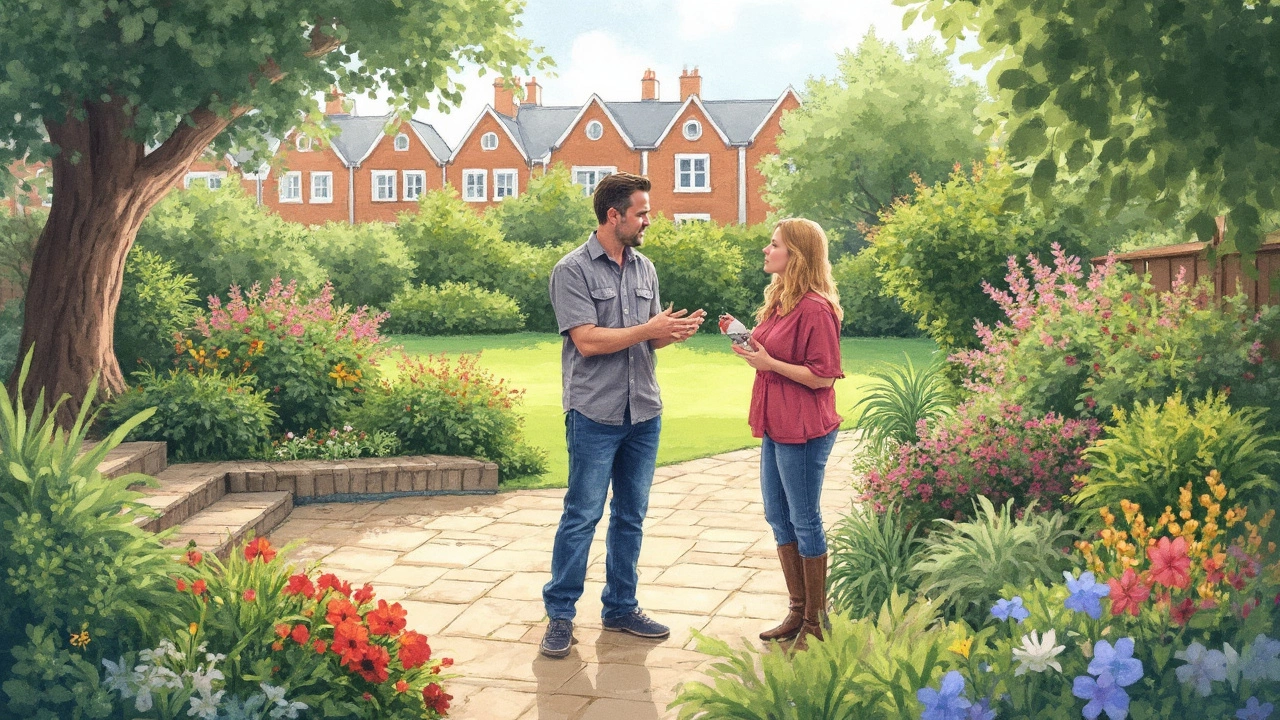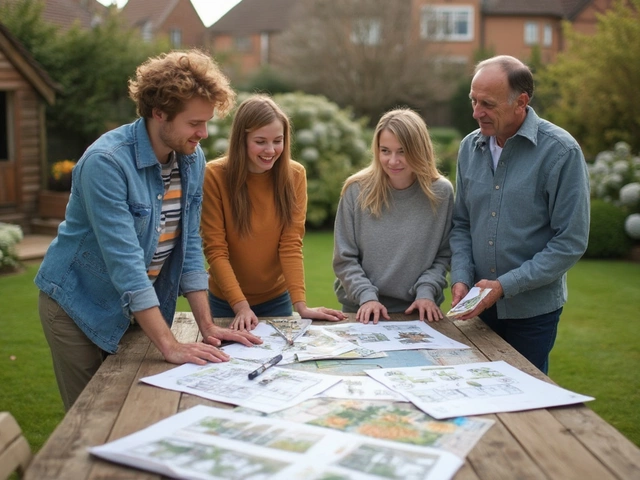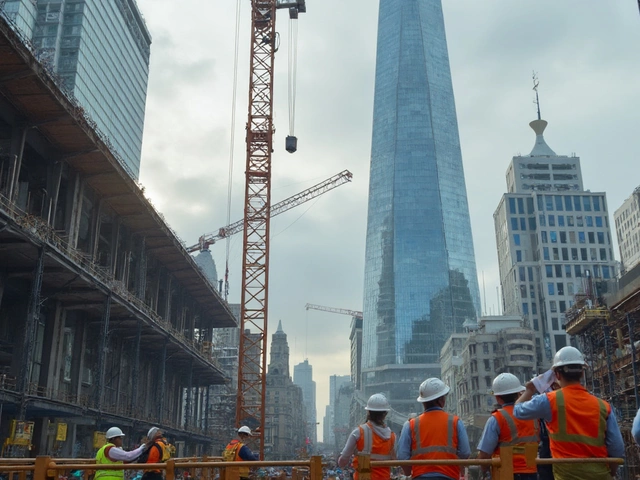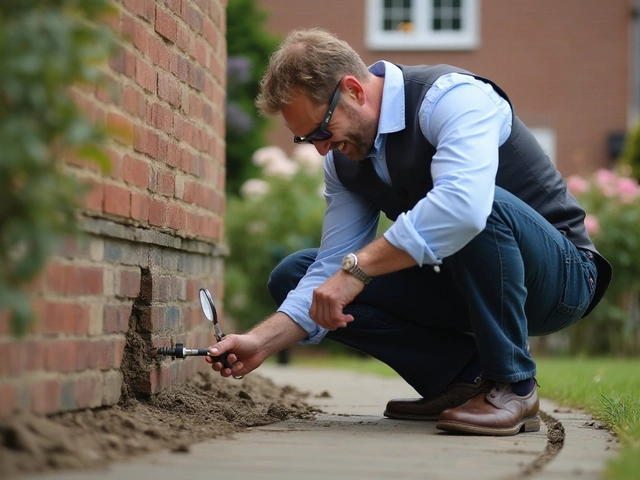If you’ve ever asked, “How much will it cost to fix up my yard?” you’re not alone. Figuring out landscaping costs can feel like tossing a dart in the dark. The price depends on what you want done, your yard size, and even what’s hiding under that patchy grass.
The trick is to break it down. Think of your project as a recipe—it needs ingredients (materials), a cook (labor), and sometimes the fancy stuff, like a cool patio or a fire pit. The more ingredients and helpers you need, the higher the cost goes. But you don’t have to guess—there’s a simple math to it, and knowing how it works keeps you from overpaying.
- What Goes Into Landscaping Costs?
- How to Estimate Your Yard’s Square Footage
- Breaking Down Materials and Labor
- Special Features That Raise Prices
- Easy Ways to Save Money
- Common Mistakes (and How to Dodge Them)
What Goes Into Landscaping Costs?
When you’re trying to pin down landscaping costs, you need to know what ingredients are going into the price. It’s not just about buying soil and plants. There’s a full recipe, and every step can change the final bill.
First off, you’ll pay for design if you want a pro to map out your space. Some landscape designers charge by the hour (usually between $50 and $150), or they might give you a flat fee based on how big or detailed your yard is. Going with a simple sketch? That costs less than a 3D rendering with all the bells and whistles.
Then comes the stuff itself—plants, mulch, patio pavers, stone, sod, fencing… you get it. The types of materials make a huge difference. For example, sod can cost around $0.35–$0.85 per square foot, while fancier stones for a patio can run $15 per square foot or more. And that doesn’t even touch trees, which can jump in price depending on the type and size.
Next up is labor. Most landscape services charge either an hourly rate (think $25–$100 an hour) or by the square foot if it’s a bigger job. Complex projects, like installing a pond or big retaining wall, jack up the labor cost fast.
A few sneaky costs that catch people off guard include:
- Delivery fees for heavy stuff like mulch, rocks, or trees
- Permit fees if you’re building decks, fences, or big structures
- Land grading or soil prep, which often isn’t included in basic quotes
- Disposal of old plants, dirt, or debris—haulers usually charge extra
If you’re curious how it adds up for a typical backyard project, check out this ballpark range for a 1,000-square-foot lawn:
| Cost Area | Low Estimate | High Estimate |
|---|---|---|
| Design | $250 | $2,000 |
| Planting & Sod | $1,000 | $3,000 |
| Hardscaping (Patio, Walkway) | $2,000 | $10,000 |
| Labor | $1,000 | $5,000 |
| Extra Fees | $200 | $1,000 |
Add all that up, and you can see why details matter. The more you know about where the money goes, the tighter you can keep your landscaping budget under control.
How to Estimate Your Yard’s Square Footage
Before getting into specific landscaping costs, you need to figure out the size of your yard. Almost every company prices jobs by the square foot. The bigger your space, the more materials and time it takes—simple as that.
Start by grabbing a measuring tape, a notebook, and maybe a friend. Don’t worry if your yard isn’t a perfect rectangle—most aren’t. Just break it into simple shapes: rectangles, squares, triangles, or circles. You’ll measure each one and add them together for the total.
- Rectangles or Squares: Measure the length and width. Multiply them together. (Example: 20 feet x 10 feet = 200 sq ft)
- Triangles: Measure the base and height. Multiply them, then divide by 2. (Example: 10 feet x 8 feet ÷ 2 = 40 sq ft)
- Circles: Measure the distance through the center (diameter). Divide by 2 for the radius, then use the formula π x radius². For quick math, π is about 3.14. (Example: 8 foot diameter → 4 foot radius, 3.14 x 16 = 50.24 sq ft)
If you want to double-check, you can pace the length and width by walking heel-to-toe, then multiply by your shoe length in feet. It won’t be perfect but gets you close enough for early estimates.
Check out this quick chart to compare average yard sizes (real data from 2023):
| Property Type | Average Yard Square Feet |
|---|---|
| Urban Home | 1,200 |
| Suburban Home | 4,500 |
| Rural Home | 12,000+ |
Knowing the total square footage keeps your landscaping pricing honest and helps you avoid being overcharged. Plus, you can plug that number into online landscaping calculators or get quick quotes that actually make sense.
Breaking Down Materials and Labor
When it comes to landscaping costs, materials and labor eat up most of the budget. So, figuring out what you need and who’s doing the work is the first real step to avoid sticker shock.
Let’s talk about materials first. Think mulch, soil, grass, gravel, plants, pavers, and maybe even wood for decking. Prices can swing a lot—black mulch is usually $30–$40 per cubic yard, while high-end stone can jump up to $50 per square foot. Sod to cover a standard suburban lawn? That’s easily $0.30–$0.80 a square foot. If you go big and want a paver patio, it’ll be $10–$20 per square foot. Even the little stuff adds up fast—bags of fertilizer, weed barrier, and edging—so don’t forget to include them.
"Landscaping isn't just the flowers you plant; it's the foundation, the labor behind it, and the ongoing care that create lasting value." —Nick Patel, ASLA-certified landscape designer
Labor is a big chunk—almost half the total landscaping pricing on a typical job. Pros charge either per hour (usually $50–$100), by project, or per square foot. The bigger the job or the fancier the features, the more bodies you’ll see working and the larger your bill will get. Planting trees, running irrigation lines, and hardscaping all need special skills, so they’re more expensive than just mowing the grass.
Take a look at this sample cost comparison for a modest yard upgrade:
| Item | Low-End Cost | High-End Cost |
|---|---|---|
| Mulch (500 sq ft) | $120 | $200 |
| Paver Patio (200 sq ft) | $2,000 | $4,000 |
| Sod (1,500 sq ft) | $450 | $1,200 |
| Planting 10 shrubs | $300 | $800 |
| Labor (40 hours) | $2,000 | $4,000 |
Don’t forget hidden labor like delivery fees or site prep—removing old shrubs and leveling the ground can easily tack on a few hundred bucks. Always ask your contractor for a detailed estimate and double-check if cleanup is included. Sometimes, you find out hauling away debris is an extra fee.
A quick tip: bundle your projects together if possible. Contractors may offer a deal when you throw in a patio along with new plant beds. And buying materials through your landscaper can sometimes land you a better price, since they usually get bulk rates from nurseries and suppliers.
Getting a handle on the numbers now is way easier than seeing a surprise on your bill later. If you break down landscaping costs by materials and labor line by line, you’ll know exactly where your money’s going.

Special Features That Raise Prices
Once you start adding more than basic mulch and lawn mowing, the price for landscaping costs can shoot up fast. Certain yard extras almost always put a dent in your budget, and it's smart to know where the big expenses hide before you sign up for them.
Paver patios, outdoor kitchens, custom fire pits, and water features top the list. For example, a basic patio made from concrete pavers usually starts around $12–$18 per square foot, but go for natural stone and that number can easily double or triple. Same goes with outdoor kitchens—simple setups might be around $4,000, but add a built-in grill, fridge, and sink and you could be close to $15,000 before you know it.
Pools are another biggie. Installing an in-ground pool is rarely under $50,000 anymore and will eat up a huge chunk of your landscaping pricing right away. Fencing, heating, and patio work around the pool can pile on several thousand more. And don’t forget: every new feature often means more drainage and electrical work, which adds hidden costs.
- Outdoor lighting: Running quality wired lights across a yard can cost $2,000 to $6,000 or more, depending on how fancy you get.
- Irrigation systems: A full sprinkler system for an average home runs between $2,500–$4,500, but large or complex lawns can easily double that.
- Retaining walls: Basic wood or concrete block walls often start at $40 per square foot but can run a lot more if you need special engineering, curves, or high-end stone.
Want some real talk? The more unique—or “custom”—something is, the more expensive it gets. If you see a feature on a home design show and think, “That looks cool,” just know it probably comes with a heavy price tag attached.
| Feature | Budget Range | Notes |
|---|---|---|
| Basic Paver Patio | $12–$18/sq ft | Basic shape, common pavers |
| Outdoor Kitchen | $4,000–$15,000 | More appliances, higher cost |
| In-ground Pool | $50,000+ | Extras like heating & fencing add more |
| Irrigation System | $2,500–$9,000 | Larger lawns cost more |
| Retaining Wall | $40+/sq ft | Complex design = higher price |
The key here: decide early which extras are must-haves and which are just nice-to-haves. Those little upgrades add up quicker than you’d think—and knowing their impact helps you stay in control of your yard budget.
Easy Ways to Save Money
If you think landscaping has to empty your wallet, hold that thought. You can seriously trim your landscaping costs just by making smarter choices and planning ahead. Most homeowners spend somewhere between $1,000 and $5,000 on landscaping, but you can tweak that number to fit your budget with a few tricks.
- DIY the Simple Stuff: Tasks like pulling weeds, spreading mulch, and planting small shrubs don’t require a pro. Knock out easy projects on your own—labor usually eats up about 50% of landscaping costs, so every hour you handle drops the bill.
- Use Local Plants: Native plants are built for your climate, so they need less water and live longer. You save both on buying replacements and your monthly bill. Skip anything labeled “exotic”—it usually costs more and works harder to survive.
- Buy Materials in Bulk: Need mulch, gravel, or soil? Local supply yards usually charge less than the big chain stores. Bulk buys often come with delivery, saving you both time and money on transport.
- Phase Your Project: You don’t have to do it all at once. Split a big job into two or three parts over a few seasons. This keeps your budget on track and lets you spread the landscaping pricing out over time.
- Shop Around for Services: Get at least three quotes for any pro work. You’d be surprised how much landscape services can vary, even in the same town. Ask questions about what’s included—sometimes the cheapest number leaves out stuff you’ll end up paying for anyway.
Here’s a quick peek at where your money typically goes when it comes to yard work:
| Cost Category | Percent of Total |
|---|---|
| Labor | 45-55% |
| Materials | 30-35% |
| Design/Fees | 10-15% |
| Extras (permits, cleanup) | 5-10% |
One last tip: look for local deals in spring and fall when nurseries clear out inventory. Plants are cheaper, and you’ll get more bang for your buck. Watch for city programs, too—some places give away free mulch or trees for residents trying to boost their curb appeal on a budget.
Common Mistakes (and How to Dodge Them)
Skipping the details or underestimating the work is one of the biggest reasons landscaping costs spin out of control. People often see a pretty finished yard and forget how much work (and money) went in behind the scenes. Let’s tackle some common blunders so you’re not caught off guard.
- Guessing yard size: It sounds so simple, but many folks eyeball their space and end up way off. That quick guess can throw off your entire budget. Always measure and double-check square footage, even if you have an oddly-shaped lawn.
- Ignoring labor costs: Materials get all the attention, but labor costs can make up 50% (sometimes more) of your bill. Think about how many crew members you’ll need, how tricky the site is, and whether you want the job done fast or fancy.
- Forgetting permits and fees: Some towns require a permit for patios, retaining walls, or big changes in grade. These fees aren’t always huge, but missing them can lead to fines or delays. Check with your city before work starts.
- Not planning for surprises: Underground rocks, roots, or old sprinkler lines can throw a wrench into your budget fast. Always leave wiggle room (10-15%) for stuff you can’t see until digging begins.
- Assuming ‘one size fits all’: Every yard is different. A flat, empty lawn costs way less to redo than a sloped yard with weird corners. Ask for a landscaping cost estimate that’s tailored to your situation.
- Chasing every trend: Water features and outdoor kitchens look awesome but come with hidden expenses—more plumbing, permits, and maintenance. Just because something’s cool on Instagram doesn’t mean it fits your budget or climate.
Here’s a quick snapshot of where unexpected dollars usually land in landscaping projects:
| Surprise Expense | Average Extra Cost ($) |
|---|---|
| Permit Fees | 200 - 600 |
| Hauling Away Debris | 150 - 500 |
| Repairing Irrigation | 100 - 400 |
| Soil Amendments | 50 - 300 |
If you plan ahead, ask questions, and stay realistic, you’ll dodge these potholes—and your landscaping costs will actually match your expectations.






